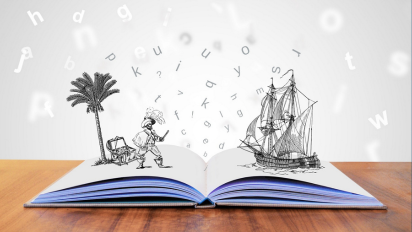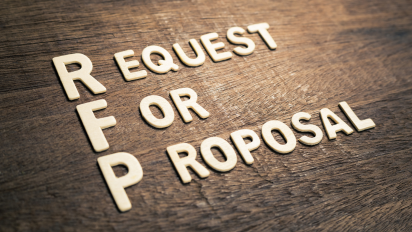The Latest
It’s that time of year again… RFP season!
A request for proposal (RFP) can cause conflicting feelings for fundraisers. While you’re probably super excited about your new project, writing the actual RFP can often feel like one more stress-inducing item on your ever-growing to do list.
But fear not! Whether you’re new to the RFP game or struggling to dust off your RFP writing skills, we’ve got you covered.
The purpose of an RFP is to detail your specific project needs so that you can find an agency that’s the best fit for you and your organization’s needs. To ensure that your RFP is working hard for you, we’ve put together a comprehensive checklist that outlines the components you need to weed out any mismatches and identify the perfect agency for you.
- Organization and project overview: Kick off your RFP with a brief overview of your organization and your project’s objectives. At the very minimum, this section should communicate your mission and enough detail about the problem you’re trying to solve so that agencies can easily determine if they’re a good fit. For bonus points, include the names and titles of your team members who’ll be working with your future agency.
- Project description: This is arguably the most important step in the RFP process! Clarity and alignment around your organization’s needs and project goals are essential for drafting a complete and effective RFP. Be specific about the needs, services, products, or systems required. It’s also just as important to be upfront about what won’t be included. Specify any limitations, constraints, or exclusions that agencies should be aware of so they can address them in their strategy. To really make your prospective agency sing your praises, include the anticipated duration of the work or project, any significant roadblocks, and necessary prerequisites.
- Scope of work: This segment contains a detailed breakdown of the tasks and responsibilities, desired attributes, timelines, milestones, and deliverables. Be extremely clear about what you’re looking for so agencies can craft accurate and comprehensive proposals. This will also help you in the long run with reducing project risks, utilizing resources, and mitigating delays.
- Guidelines for proposal submission: This is where you provide instructions for preparing and submitting proposals, including format, necessary components, and specific questions that respondents must address. This segment also states where submissions should be sent, if you want electronic or hard copies, and the amount of copies you want. And make sure to include contact details! Don’t miss out on a response that hits all the marks for you because of an unforeseen technical glitch.
- Timeline for responses: This segment offers crucial dates such as the proposal submission deadline, schedules for pre-proposal meetings or Q&A sessions, and timeline for the review process and final decision-making. It’s often one of the first things an agency turns to so that it can determine if they’re able to respond.
- Selection and criteria: The RFP should state the standards used by your organization for assessing proposals. Criteria may involve aspects like cost, experience, technical capabilities, project approach, and adherence to the stipulated requirements. What’s important for your team to see included during review?
- Budget and costs: While it’s understandable that you’d prefer your prospective agency to provide you with their “best plan,” not including a budget in your RFP is like asking an Uber driver to navigate the way home wearing a blindfold. A budget—or even a range—helps agencies offer realistic and competitive rates. It also allows agencies to innovatively apply your budget so that you’re getting the best bang for your buck.
- Terms and legal conditions: This section covers the legal and contractual terms of the project, encompassing payment conditions, duration of the contract, confidentiality clauses, and other legal requirements.
- Supplementary information and attachments: Often a footnote, but just as important, be sure to provide extra details pertinent to the RFP, like supporting documents or specific templates that respondents should utilize in their proposals.
- Data: The most important thing that you can provide to the agencies bidding on a future partnership with your organization is data. This includes raw data to prepare a performance profile and see where your growth trends are, segmentation and segmentation quantities, and historic campaign analysis, to name a few. Data is the backbone of understanding where you are and how to get you to where you want to be, making it vital for agencies to prepare a realistic proposal.
- NDA (Non-disclosure agreement): Identify any compliance or regulatory requirements that the project must adhere to, and be sure to involve information security, compliance, or IT team members in drafting the NDA. If you’re supplying data and need the agency to sign an NDA prior to data submission, bear in mind that extra time on the agency side may be needed to review the NDA.
As with any big project, the amount of time and intentionality that you invest on the front end will help drive an outcome that rewards you with exactly what you and your organization need to take the next steps towards growing your mission. By taking the time to clearly communicate your needs and requirements, you can create an RFP that attracts qualified agencies and leads to a successful partnership for your organization.





